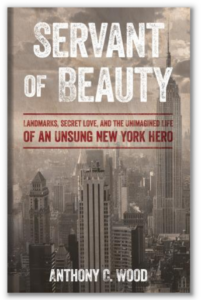
Recent Publications: Read Up on the Latest in Preservation Scholarly Work
October 14, 2010
Article from the Fall 2010 Newsletter
NYPAP is excited to announce the publication of three fascinating works on the history of preservation in New York City. PDFs of these works, and others, can be found in the Resource Library section of the NYPAP website. Enjoy the read!
Marjorie Pearson has recently completed New York City Landmarks Preservation Commission (1962-1999): Paradigm for Changing Attitudes Towards Historic Preservation. With the help of a Samuel H. Kress Mid-Career Grant Study and funded by the James Marston Fitch Charitable Foundation, this comprehensive work describes and analyzes the history of the New York City Landmarks Preservation Commission while setting it within a larger national context. Beginning with the pre-1965 Advisory Commission, the work chronicles the establishment of the Landmarks Preservation Commission, its years of expansion, its subsequent period of siege and finally its coming of age in the last decade of the twentieth-century. Using her insider experience as Director of Research at the LPC from 1978 to 1999, the work describes these changes with a uniquely personal touch. Among the many issues analyzed, Pearson discusses the social and cultural issues that shaped the Commission, using the various chairman as focal points. This work is an invaluable contribution to the history of Landmarks Preservation Commission.
Another recent publication with a focus on the Landmarks Preservation Commission is Benjamin Baccash’s Enforcement and the New York City Landmarks Law: Past, Present, and Future. Baccash completed this ground-breaking thesis while undertaking the Master of Science in Historic Preservation degree at Columbia University’s Graduate School of Architecture, Planning & Preservation. In this work, Baccash questions the efficacy of the LPC’s enforcement of the New York City Landmarks Law. Although the law is highly-regarded as one of the most powerful in the nation, Baccash argues it is only so with the strongest possible enforcement at the LPC. Thoroughly detailed in the work is the history and evolution of LPC enforcement, comparing the enforcement policies to other locales’ preservation ordinances and, interestingly, federal environmental laws like the Clean Air Act. Various case studies – such as the Lenox Hill Brownstones and the Windemere – are also put forth as real world examples of enforcement in action. Baccash concludes this comprehensive study with suggestions on how enforcement of the Landmarks Law may be improved for the future. NYPAP is proud to share this important resource with the preservation community.
Last but not least is Martin L. Schneider’s Battling for Brooklyn Heights. This compelling narrative is an eye-witness account of the passionate grassroots effort to protect one of the city’s most architecturally beautiful neighborhoods, the neighborhood that would become New York City’s first historic district. While highly personal in scope, Schneider also ties the battle into the larger context of Brooklyn in the 1960s, addressing divisive issues like urban renewal, slum clearance and the need for middle income housing. Also detailed is the rise of reform politics in Brooklyn, growing real estate pressures, the debate over providing quality public education and the heroes and villains that used Brooklyn Heights as their battleground. Even today, with more than 100 historic districts in New York City, preservationists and passionate citizens inevitably face the same hurdles in attempting to protect their favorite corners of the city. NYPAP’s hope is that through Schneider’s work, these concerned activists may gain inspiration for their own battles, and in the end, achieve an equal level of success. We also hope that this story will provide motivation for those of you that have made – or are making – preservation history to capture your story on tape or in writing.




